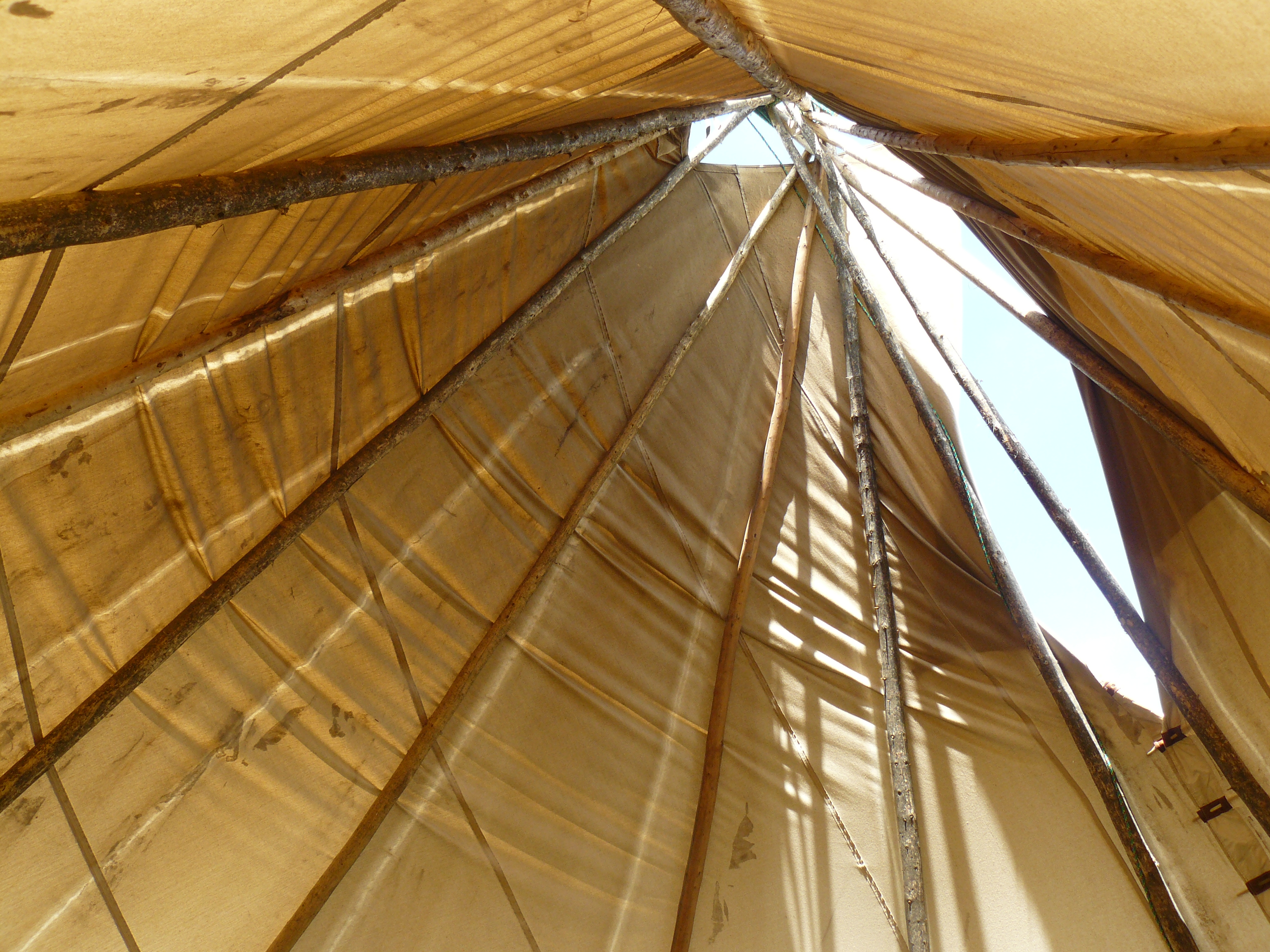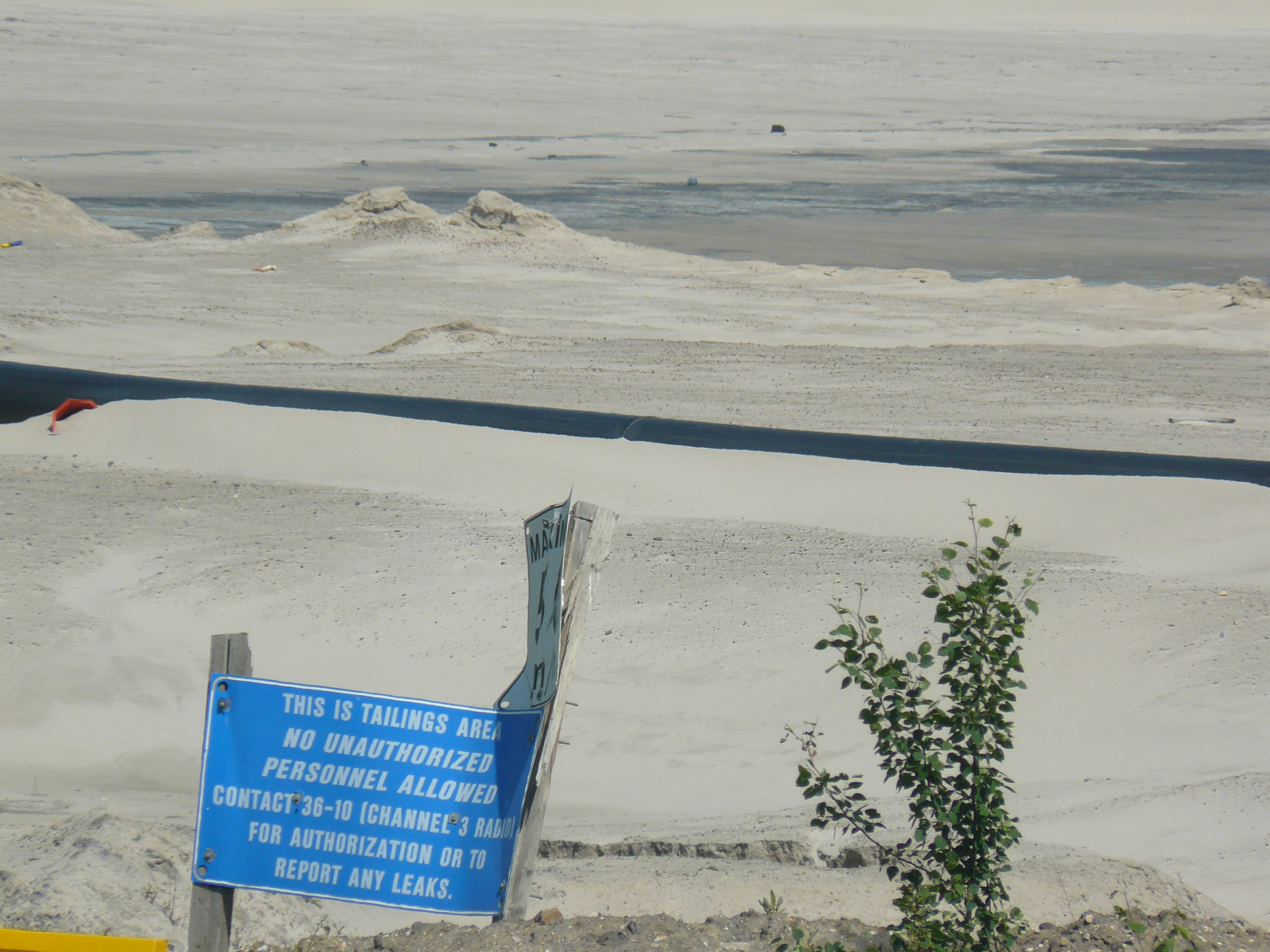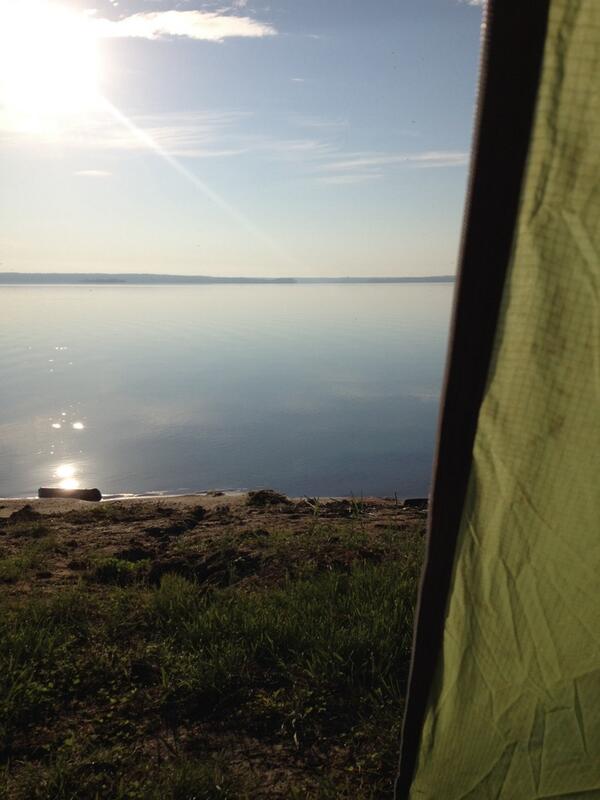It’s the last week of our supporter drive and boy, do we need you! Please help rabble.ca amplify democratic movements like the struggle against the Tar Sands. Become a monthly supporter.
The fifth and final Athabasca Tar Sands Healing Walk took place June 27 – 29, 2014 near Fort McMurray, Alberta. rabble.ca‘s Blogs Coordinator, Michael Stewart, attended to participate in, learn from and bear witness to this powerful event. The following is the second of a three-part series recording his experiences. Read his preamble in advance of the Walk here. Part one can be found here, part three here.
I awoke early the first morning — along with the rest of the camp here for the fifth and final Athabasca Healing Walk — to the sun already well above Lake Gregoire by 6 a.m. Some locals had visited us the night before, coming in on their boat from an aborted fishing mission and shared our fire, excited to hear about the Walk. By 11 p.m. there was still no sign of the sun going down. I asked one of them, Randy, when the sun goes down this far north. “July,” he answered.
Our camp’s water came from his nearby town of Anzac, largely populated by non-status Aboriginal people. It smelled strongly of butane and some participants complained of headaches after the first evening. This water is the water used every day by the community — they don’t have tap water and need to have it trucked in from the Water Treatment Centre in Fort McMurray. “There is no other water,” Walk organizer Eriel Deranger told the camp in response to the complaints.
It’s perhaps a bit harsh on those in attendance to call the inability to immediately distinguish your drinking water from diesel a “first-world problem,” but the reality is that for many Indigenous communities represented in the walk, having access to water you can actually drink irrespective of its taste is a rare privilege. Regardless, after Deranger’s announcement, I didn’t hear anyone else fuss about the stuff in our reservoir tanks again.
The day before I had flown in over the mighty Athabasca River, whose watershed occupies one quarter of the province of Alberta. From its providential headwaters in the Columbia Icefields of Jasper National Park, the water flows crystal clear, cold and drinkable right out of the riverbed. It continues across the foothills of the Rocky Mountains and the beginnings of the Boreal Forest until it drains into Lake Athabasca, eventually joining the Mackenzie River on its way to the Arctic Ocean. Here, in Fort Mac, its sinewy bends are chocolate brown, muddy and turbid; downstream from the Tar Sands cancer rates have spiked, poisoning a thoroughfare and wellspring that has sustained and nourished its traditional caretakers for thousands of years.

From the top of our heads to the bottom of our feet
Water loomed prominently over the entire weekend. Organizers for this year’s Walk had issued a call-out for water from all participants in advanced of the weekend’s events. Visitors brought small samples from their local rivers, lakes or oceans, augmented by a pinch of tobacco to thank the Earth for her gift. Each morning, Crystal Lameman, Healing Walk organizer and resident of Cold Lake in Treaty 6, collected this water and used it in a ritual conducted by women to mark each day’s proceedings.
“I’m not an activist. I’m not an environmentalist. I’m a mother,” Lameman told the group on the first day. “And women take care of the water.” As if to prove it Lameman invited her aunt to perform the ritual, who did so with grace and charm. “I am concerned about Mother Earth. I am concerned about our health from the top of our heads to the bottom of our feet,” she says, smile sparkling. “We must keep our water safe for seven generations to come.”
Each of us is the fourth of seven generations — with parents and children; grandparents and grandchildren; great-grandparents and great-grandchildren on either side of us. Those of us who are blessed will experience all seven generations in a single lifetime. This emphasis, this centrality of lineage, legacy and debt to the past and future members of our societies — who Grand Chief Derek Nepinak called during the pipe ceremony “those who are not yet here” — is often lost in settler culture. Perhaps this deficit does some work towards explaining how in a single generation the longevity of an entire watershed can be put at risk. Since the 1970s, the waterflow of the Athabasca has decreased one third.
Light rains came out of a clear sky during the first water ceremony, seemingly offering their own blessing to the weekend as each of us drank sparingly from another bucket of local spring water. During the walk itself, we stopped four times to pray and the women offered this water and tobacco in a healing ceremony. On the final day, the collected water extinguished the fire that had burned throughout the weekend. And all the while the sound cannons warning the avian life native to the Athabasca to avoid the Tar Sands at their peril continued to rumble.

“Now it’s gone.”
The intense use of water in tar sands mining is well documented. In situ mining, which accounts for 80 per cent of current extraction projects, requires one barrel of water per barrel of oil extracted, nearly all of it ending up contaminated with carcinogenic heavy metals and polycyclic aromatic hydrocarbons (PAHs). Open pit mining wastes four barrels of water per barrel of oil. Industry stores this effectively irretrievable water in its infamous tailings ponds — where these toxins are suspected of leeching into groundwater, soil and the Athabasca River itself.
Aboriginal communities in Fort Chip, Fort McKay, Peace River, Cold Lake and Wabasca have complained about aggravated health problems since tar sands development intensified over the past decade — skin afflictions, auto-immune diseases and cancer. Fort Chip noted a 30 per cent increase in rare and aggressive cancers — bile duct cancer, blood and lymphatic cancer, biliary tract cancer, among others. Dr. John O’Connor, a guest of honour at this year’s Healing Walk, treated Fort Chip residents for their afflictions. When he suggested the disproportionate number of cancer cases could be explained by Tar Sands development in 2006, he was slandered by industry and accused of misconduct by no less than the Alberta government. No one, but no one, would listen — and they’re still not listening.
The weekend was littered with stories that illustrated the traumatic effects a fear of poisoned water — in Canada, in the twenty-first century — has on the affected communities. During the welcoming ceremony, Annette Campre represented Fort McKay First Nation, where puddles glisten yellow when it rains due to the sulphur in the atmosphere. “We can’t use the water in our taps,” she told us. “In my community, we bathe our babies in bottled water.” She has seven band members, she says, on the third floor of Northern Lights hospital in Fort McMurray.
One evening, Chief Allan Adam of the Athabasca Chipewyan First Nation in Treaty 8 territory joined us at our campfire. Looking out onto the lovely Gregoire Lake, upstream and upwind from the Tar Sands, we spoke of the beauty of the place. After the Healing Walk most of the 300 or so campers shed their clothing, damp from heat and sweat, and jumped into the cool water. It was a special place, Chief Adam conceded, but he comes from “the most beautiful lake in Alberta. But now it’s gone.”
A 2010 study showed that Lake Athabasca, where Adam’s people have lived for thousands of years, is contaminated with carcinogenic metals including mercury, thallium, cadmium and lead, leading to deformation of fish and other animals. The Alberta government released a report in March on its findings of reported incidences of cancer in Chief Adam’s community. The community was not notified or consulted during the report process. As we gathered around our fire an understated sadness lingered as he showed us a video on his phone: he and his motorboat speeding toward a gorgeous sunset just beyond the horizon. It was hard to argue with his assessment of his ancestors’ land.

“We may shut it down.”
This past Monday, a joint study from Allan’s Athabasca Chipewyan First Nation, Mikisew Cree First Nation and two University of Manitoba scientists confirmed what residents from these communities have been saying for years: heavy metals and other toxins from the Tar Sands have been poisoning moose, caribou, water fowl, fish and local plants like mint and Labrador Tea. With development and expansion showing no signs of slowing, let alone stopping, it’s hard to see how this frightening trend can be reversed. As Allan said during an earlier presentation, “One day, the petroleum will be gone but the chemicals in the Athabasca will still be there.”
Former Mikisew chief George Poitras of the Mikisew gave one of the keynote lectures Friday night. He recalls how the land around Fort Chip used to be known for its water. “Twenty years ago,” he says, “you could scoop water from the boat or canoe driving on the rivers, on the lakes, without any concern. Nobody does that anymore.”
Five members of his community — a population of 850 — were diagnosed with cancer the same day. For Poitras — and for anyone looking at the data, hearing the testimony and surveying the extent of the watershed damage — there is no doubt that pollution of the Athabasca watershed is behind the health problems.
“Water, water everywhere,” he says, not without sadness. “And not a drop to drink.”
But the First Peoples of Turtle Island are known also for their resistance. With the release of Monday’s report, they have single-handedly raised this issue to the national level. “We would tell the truth wherever anyone would listen,” Poitras says. And they’re not done. “Once we know the true depth of contamination,” Poitras told the Healing Walk attendees. “I am telling you, we may say shut it down.”
Poitras’s closing words were forceful and true: “Our kids will ask us one of two questions: where did you find the courage to stand up; or why didn’t you do enough? We all know the story of the man who sat beside the trail for too long and lost the path. We cannot go back and we cannot sit beside the trail.”
When the earth that fed the moose and caribou on which you rely has turned to dust and you can no longer drink the water that falls from the sky, few options remain.
Read Part One of “Healing a Boomtown” here. The third and final part can be found here.
Photo of Athabasca River from wikimedia commons. All other photos by Michael Stewart.



